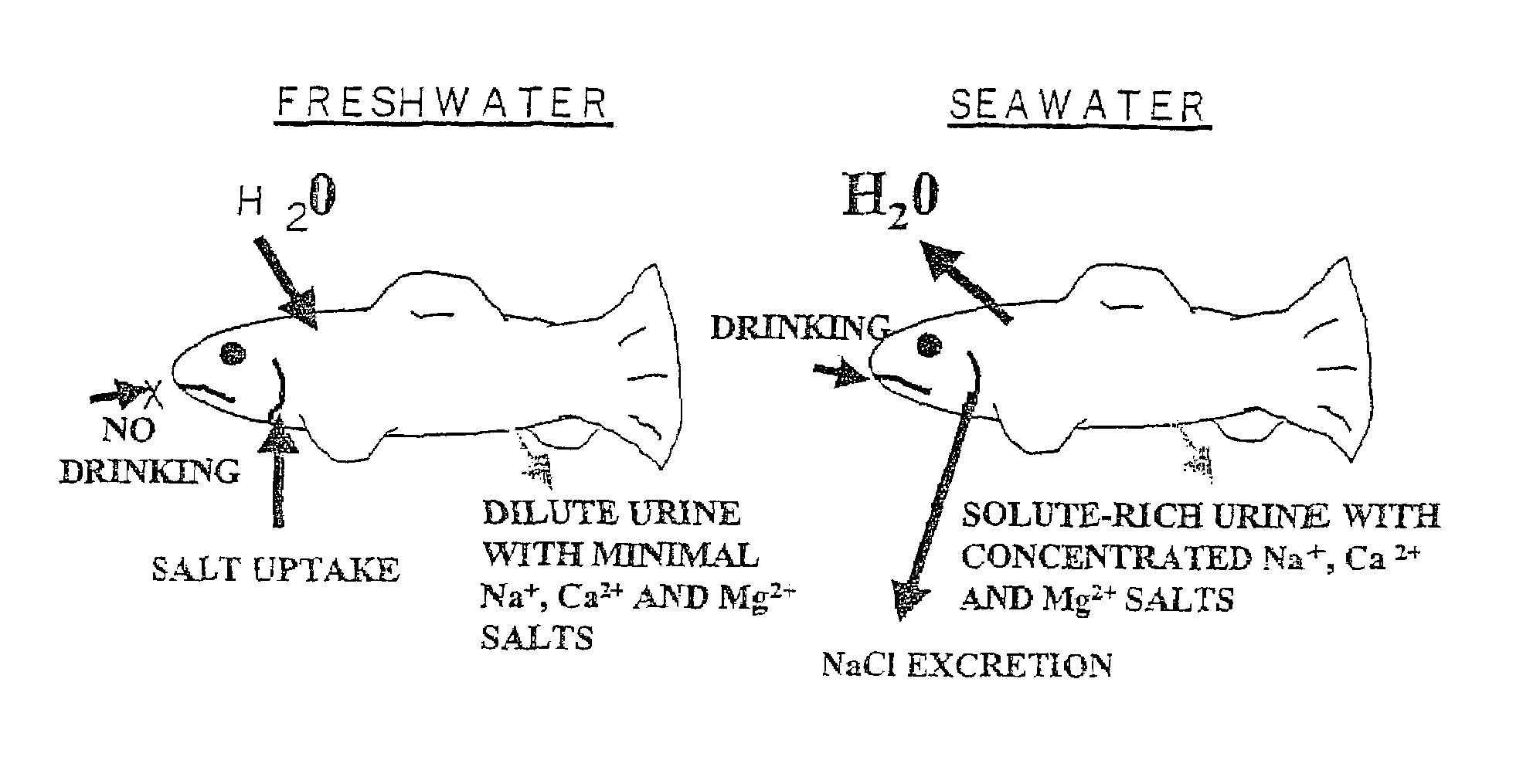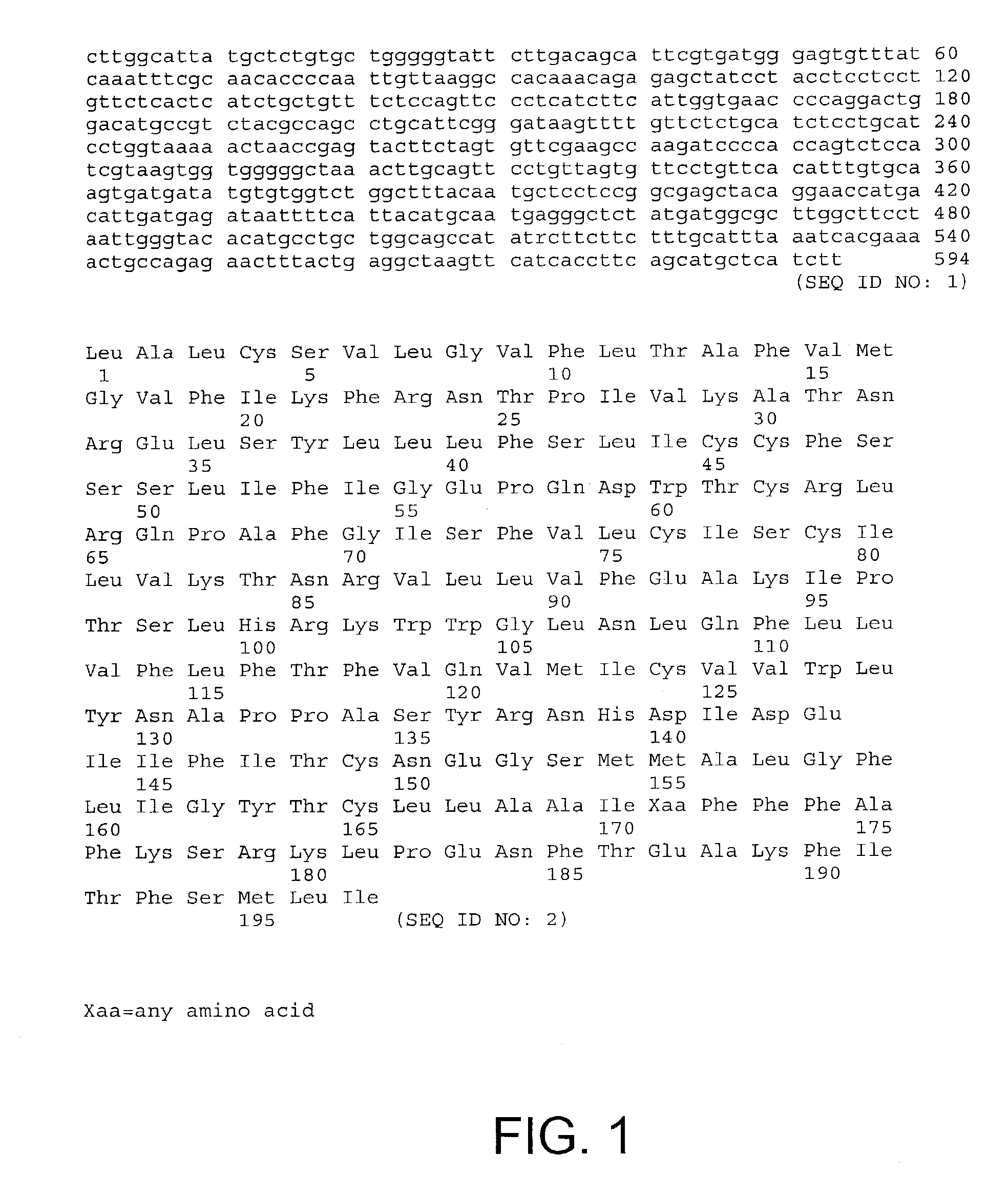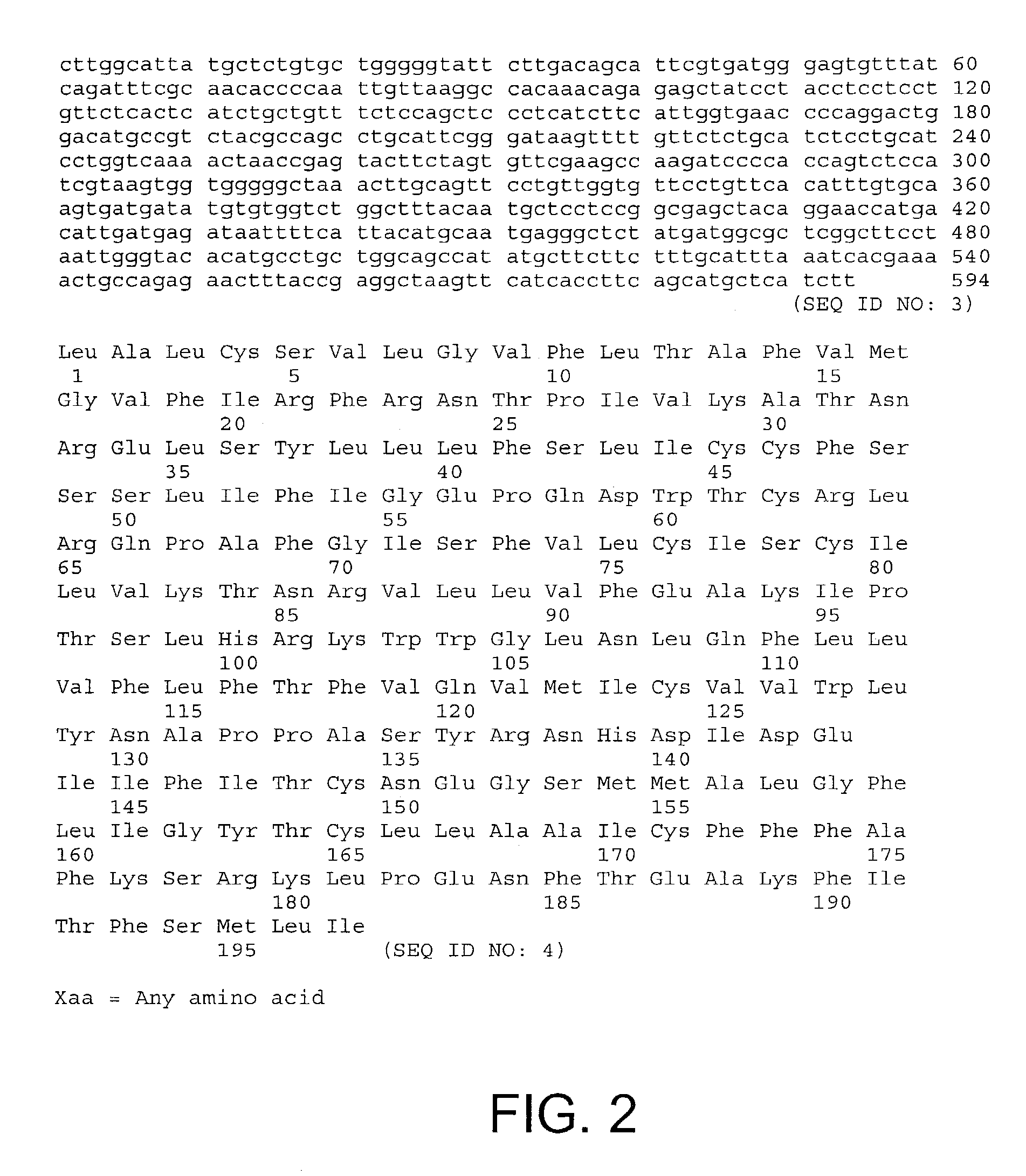Methods for raising pre-adult anadromous fish
a technology for anadromous fish and preadults, which is applied in pisciculture and aquaria, biochemistry apparatus and processes, microorganisms, etc., can solve the problems of difficult to pinpoint, significant morbidity and mortality in hatcheries, and difficulty in raising these types of fish, so as to improve the adaptability to seawater, alter the sensitivity of pvcr, and improve the effect of pvcr
- Summary
- Abstract
- Description
- Claims
- Application Information
AI Technical Summary
Benefits of technology
Problems solved by technology
Method used
Image
Examples
example 1
Polyvalent Cation-Sensing Receptors (PVCRs) Serve as Salinity Sensors in Fish
[0123]Polyvalent cation-sensing receptors (PVCRs) serve as salinity sensors in fish. These receptors are localized to the apical membranes of various cells within the fish's body (e.g., in the gills, intestine, kidney) that are known to be responsible for osmoregulation. A full-length cation receptor (CaR, also referred to as “PVCR”) from the dogfish shark has been expressed in human HEK cells. This receptor was shown to respond to alterations in ionic compositions of NaCl, Ca2+ and Mg2+ in extracellular fluid bathing the HEK cells. The ionic concentrations responded to encompassed the range which includes the transition from freshwater to seawater. Expression of PVCR mRNA is also increased in fish after their transfer from freshwater to seawater, and is modulated by PVCR agonists. Partial genomic clones of PVCRs have also been isolated from other fish species, including winter and summer flounder and lumpf...
example 2
Survival and Growth of Pre-Adult Anadromous Fish using the Methods of the Present Invention
[0125]An important feature of current salmon farming is the placement of smolt from freshwater hatcheries to ocean netpens. Present day methods use smolt that have attained a critical size of approximately 70–110 grams body weight. The present invention can either be utilized both to improve the ocean netpen transfer of standard 70–110 grams smolt as well as permit the successful ocean netpen transfer of smaller smolts weighing, for example, only 15 grams. For standard 70–110 gram smolt, application of the invention eliminates the phenomenon known as “smolt window” and permits fish to be maintained and transferred into ocean water at 15° C. or higher. Use of the invention in 15 gram or larger smolt permits greater utilization of freshwater hatchery capacities followed by successful seawater transfer to ocean netpens. In both cases, fish that undergo the steps of the invention feed vigorously w...
example 3
Exposure of Salmon Smolts to Ca2+ and Mg2+ Increases Expression of PVCR in Certain Tissues
[0180]In smolts that were exposed to 10 mM Ca2+ and 5.2 mM Mg2+, the expression of PVCR was found to increase in a manner similar to that in smolts that are untreated, but are transferred directly to seawater.
[0181]Tissues were taken from either Atlantic salmon or rainbow trout, after anesthesitizing the animal with MS-222. Samples of tissues were then obtained by dissection, fixed by immersion in 3% paraformaldehyde, washing in Ringers then frozen in an embedding compound, e.g., O.C.T.™ (Miles, Inc., Elkahart, Ind., USA) using methylbutane cooled on dry ice. After cutting 8 micron thick tissue sections with a cryostat, individual sections were subjected to various staining protocols. Briefly, sections mounted on glass slides were: 1) blocked with goat serum or serum obtained from the same species of fish, 2) incubated with rabbit anti-CaR antiserum, and 3) washed and incubated with peroxidase-...
PUM
 Login to View More
Login to View More Abstract
Description
Claims
Application Information
 Login to View More
Login to View More - R&D
- Intellectual Property
- Life Sciences
- Materials
- Tech Scout
- Unparalleled Data Quality
- Higher Quality Content
- 60% Fewer Hallucinations
Browse by: Latest US Patents, China's latest patents, Technical Efficacy Thesaurus, Application Domain, Technology Topic, Popular Technical Reports.
© 2025 PatSnap. All rights reserved.Legal|Privacy policy|Modern Slavery Act Transparency Statement|Sitemap|About US| Contact US: help@patsnap.com



